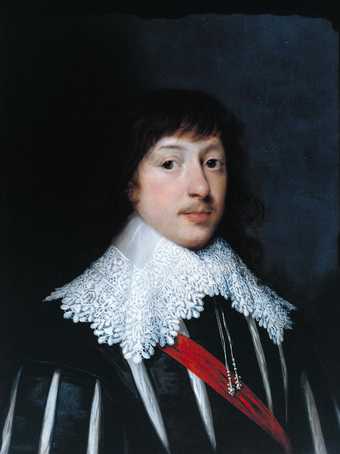
Fig.1
Cornelius Johnson 1593–1661
Portrait of an Unknown Gentleman
1629
Oil paint on panel
435x 318 mm
T00744
The support is an oak panel measuring 435 x 318 mm (fig.1). It is composed of two planks placed vertically and glued together at a butt joint (fig.2). The left plank is 76 mm wide, the right 237 mm. Although the front of the panel is smooth, the back has been left with saw marks and a rough bevel on all but the left side (fig.3). The two upright edges are cut unevenly. There is a dark reddish brown stain over the back of the panel.

Fig.2
X-radiograph of the whole painting
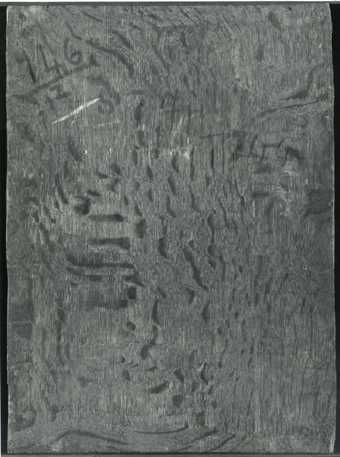
Fig.3
The back of the painting photographed in black and white
The ground is off-white in colour and is about 70 microns thick. It is made of marine chalk and animal glue (fig.4).1 It is covered by thin, pale grey, oil based priming, which is approximately 10 microns thick (fig.5).
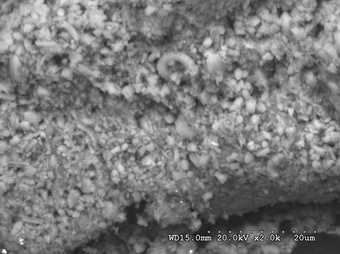
Fig.4
The ground imaged at x2000 magnification using a scanning electron microscope, showing coccoliths
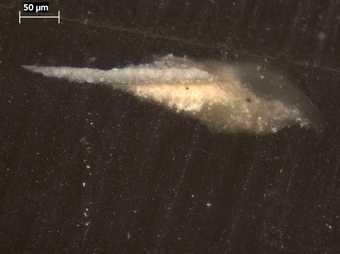
Fig.5
Cross-section of paint from the white linen photographed at x260 magnification. From bottom to top it shows: chalk ground; grey priming; white paint of the linen shirt; grey shadow of linen
No underdrawing is evident. Brushstrokes at the top edge suggest that the figure was originally conceived within a painted oval; this was confirmed during inspection with infrared when very faint spandrels were visible (fig.6). Close examination of the head reveals that it was laid in with grey paint (darker than the colour of the priming), which was allowed to dry before the flesh tones were applied.
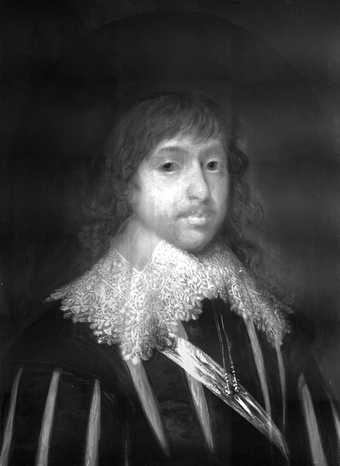
Fig.6
Infrared reflectograph of the whole painting
It is possible that the hair was sketched in with a thin brown wash (fig.7) before being built up with more substantial, opaque colours applied with descriptive brushwork. Other than the sash, which was put in last on top of the paint of the doublet, and a few of the shadows in the linen, the image was built up wet-in-wet with thin, slightly lean paint and a limited palette. The black clothing was mixed from bone black and lead white.
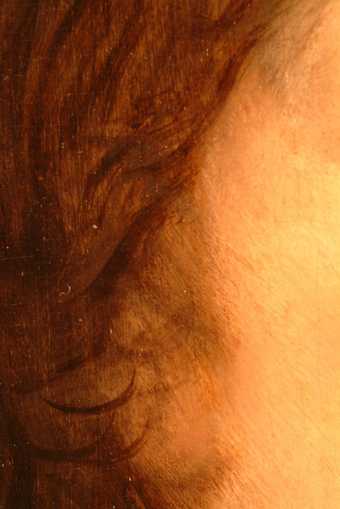
Fig.7
Macro-photograph of the edge of the face and the hair
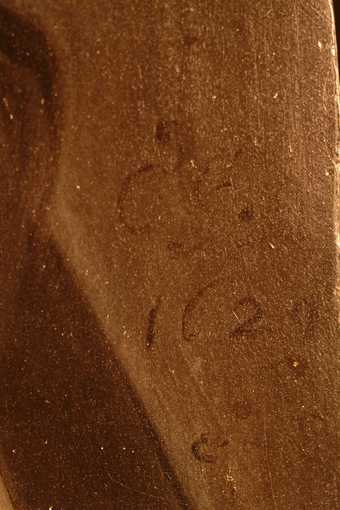
Fig.8
Signature and date, lower right corner
Regularly spaced pinholes through the paint into the wood on all edges probably relate to a net stretched over the image for the purpose of making an engraving. An engraving was done by Lucius, Viscount Falkland in 1810. The painting was cleaned in 1972. The varnish is a modern, synthetic resin.
September 2003
